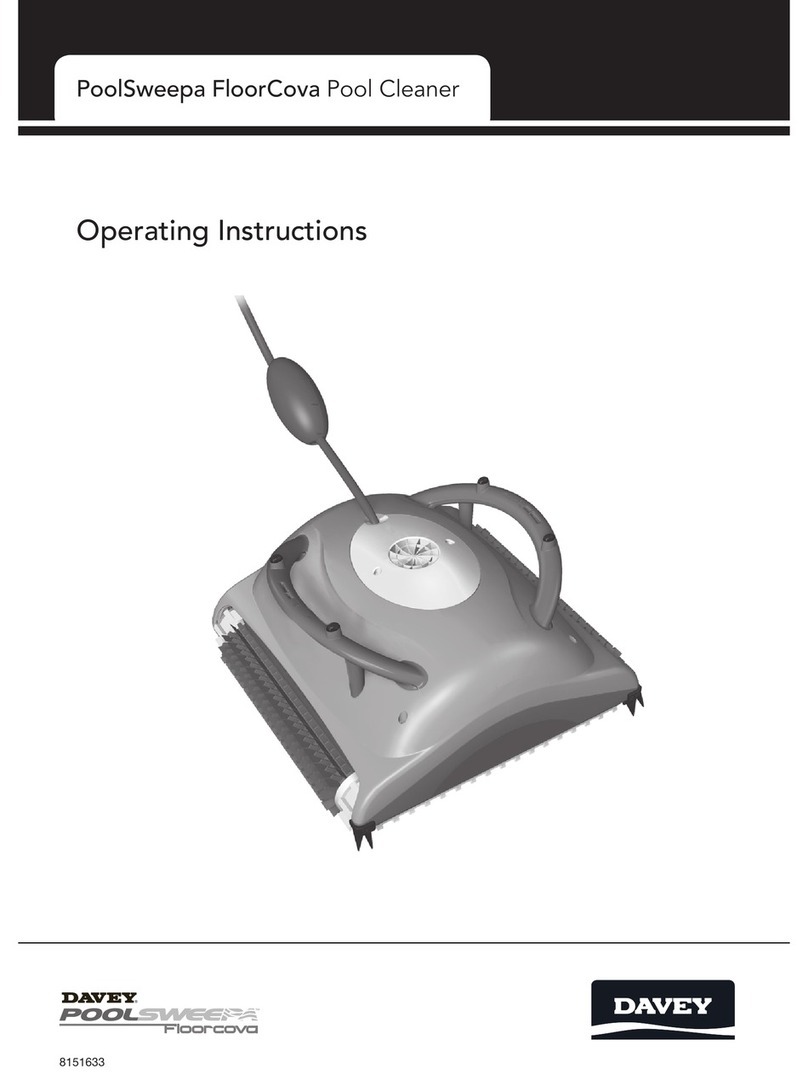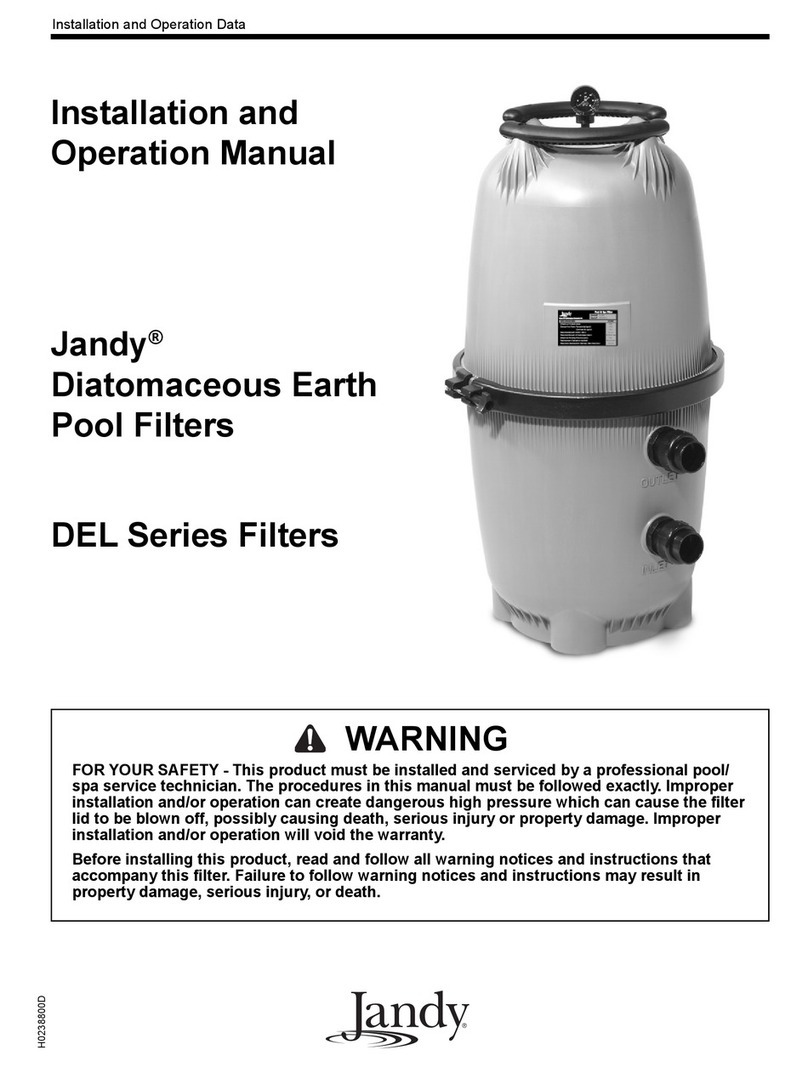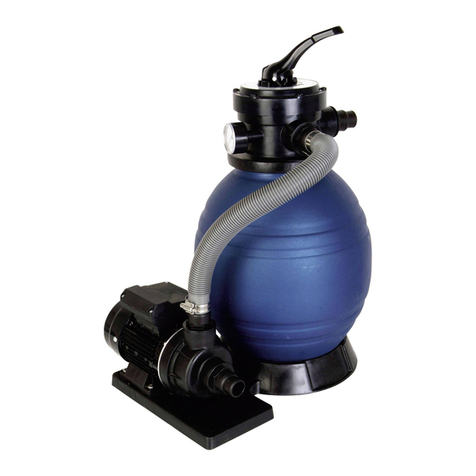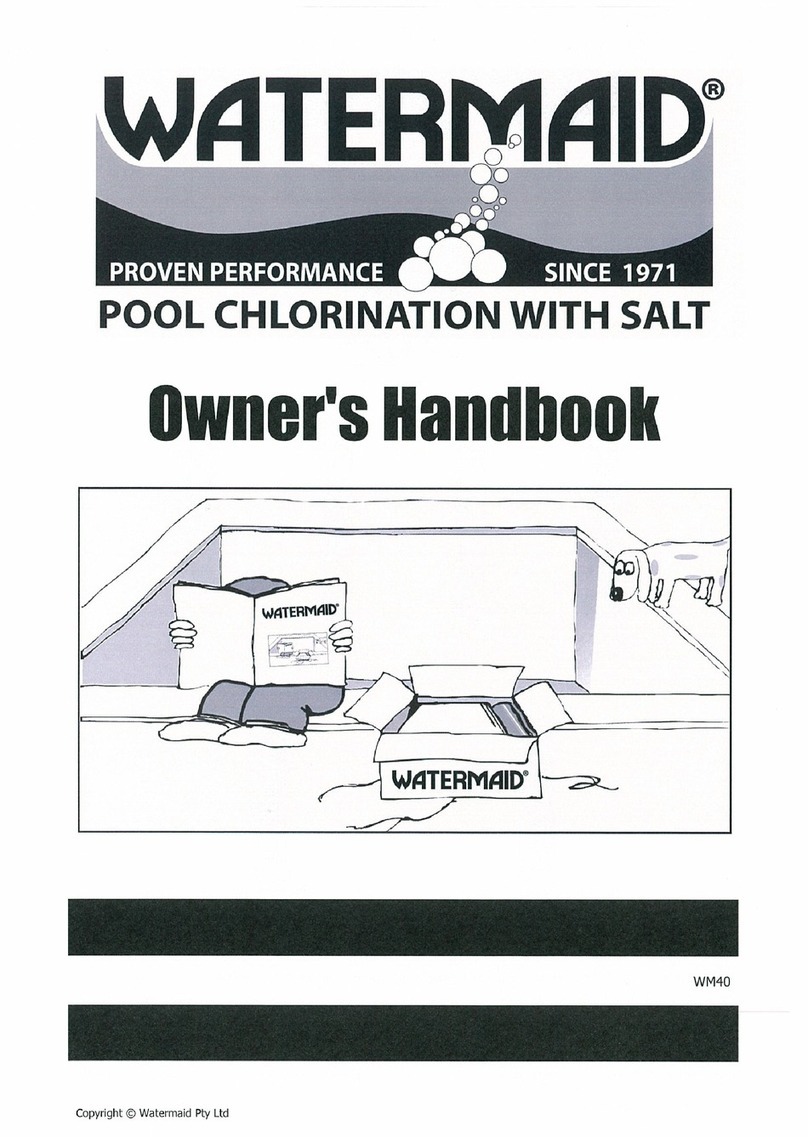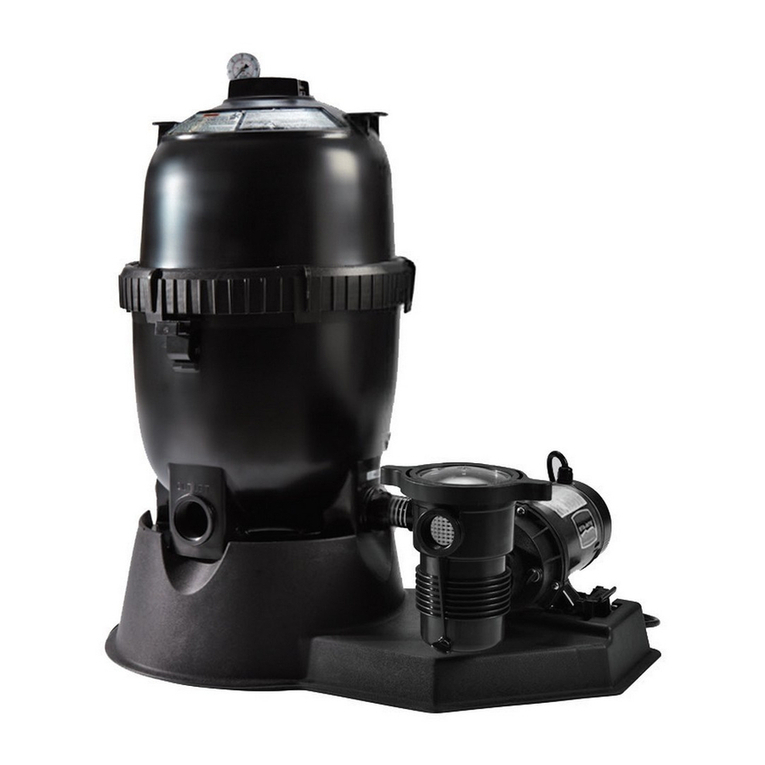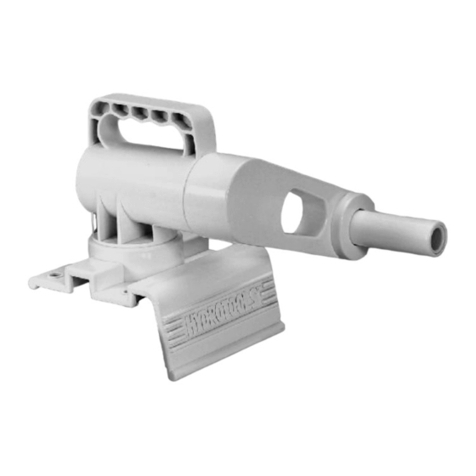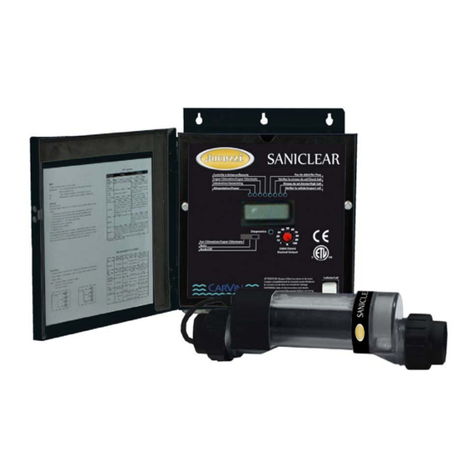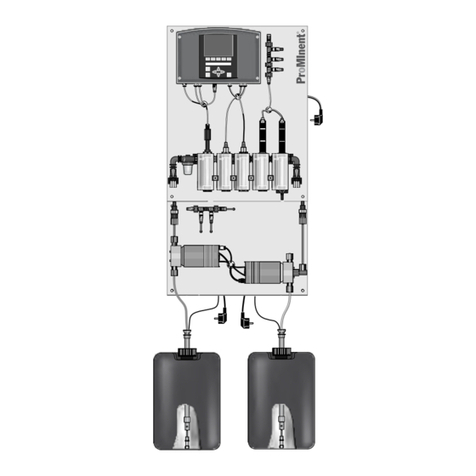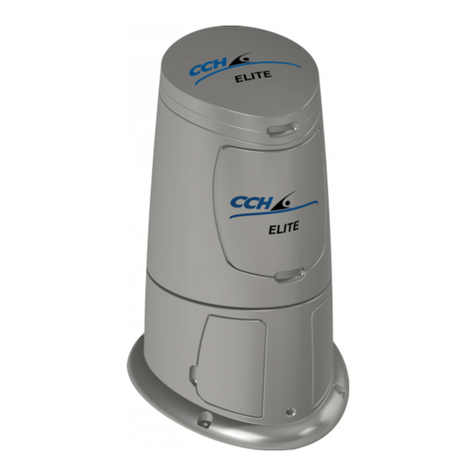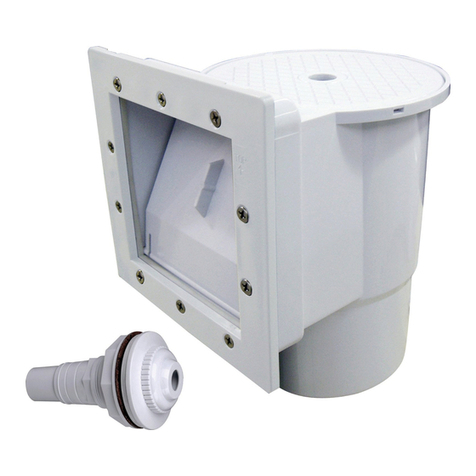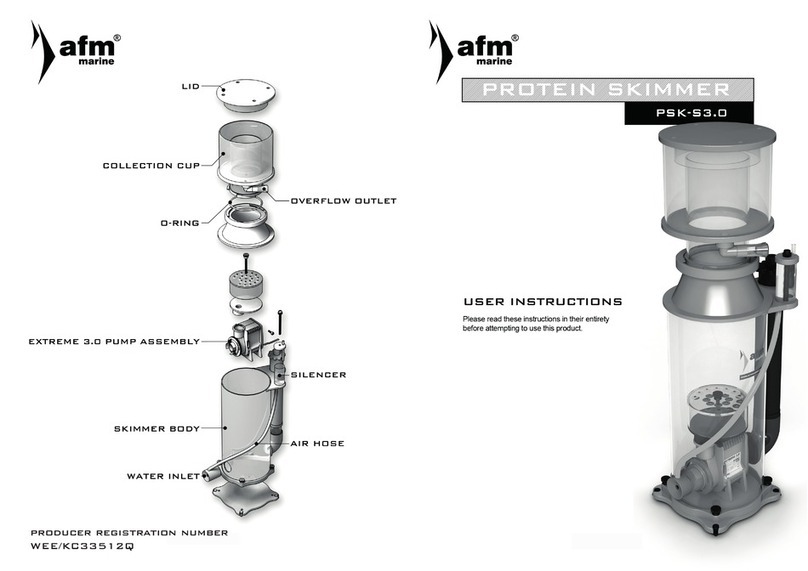START-UP PROCEDURES
After completing the PRE-START-UP CHECKLIST, and
establishing that all components of the chlorinator are
operating properly, your Easiflo® 1 Chlorinator is ready
for start-up.
Routine maintenance of the Easiflo®1 Chlorinator is
minimized when proper pool water balance is
maintained. Maintain pool water chemistry as follows:
Total Alkalinity 60-80ppm
Calcium Hardness 200-1800ppm
PH 7.2-7.6
Adherence to these recommendations at all times will
ensure the most effective and economical performance
from the Easiflo®1 Chlorinator.
NOTE: The use of CO2 to lower pH will raise Total
Alkalinity. High total alkalinity (over 80 ppm) will
increase scale and solids buildup in chlorinator.
WARNING
Use ONLY Easiflo®Briquettes in the Chlorinator. The
use of any other treatment chemicals will void the
warranty. DANGER: Under no circumstances mix
calcium hypochlorite with other forms of concentrated
chlorine or other chemicals. Fire and/or explosion may
result. Caution must be used when refilling dispenser.
KEEP OUT OF REACH OF CHILDREN
Output Rate and Start-up Settings for
Commercial Pools and Spas Vs. Inlet
Flow Rates
1. Fill the Briquette Hopper with Easiflo®Briquettes.
The Briquette Hopper holds 12.7kg of briquettes.
2. Open all valves to the pool and the outlet ball valve
of the chlorinator.
3. Check the chart below to determine an
approximate start-up Inlet Flow setting for your
pool (or be certain that the Auto Controller is
calibrated and the set-points are correct). Set the
Flow Indicator at the recommended setting using
the inlet ball valve. Note: For best chlorinator
performance with an ORP controller, set the flow
indicator for a pool 30% larger than the one at your
facility. This will assist in maintaining desired Free
Available chlorine level in pool without
overshooting ORP set point.
4. Monitor the water flow to the chlorinator daily to
ensure that a proper flow is being maintained.
5. During the first few days of operation, check
chlorine level in the pool frequently to establish the
best Inlet Flow setting (or Auto Controller setting)
for your pool. Adjust the chlorine output either up
or down according to the table, or adjust the
chlorine setpoint.

